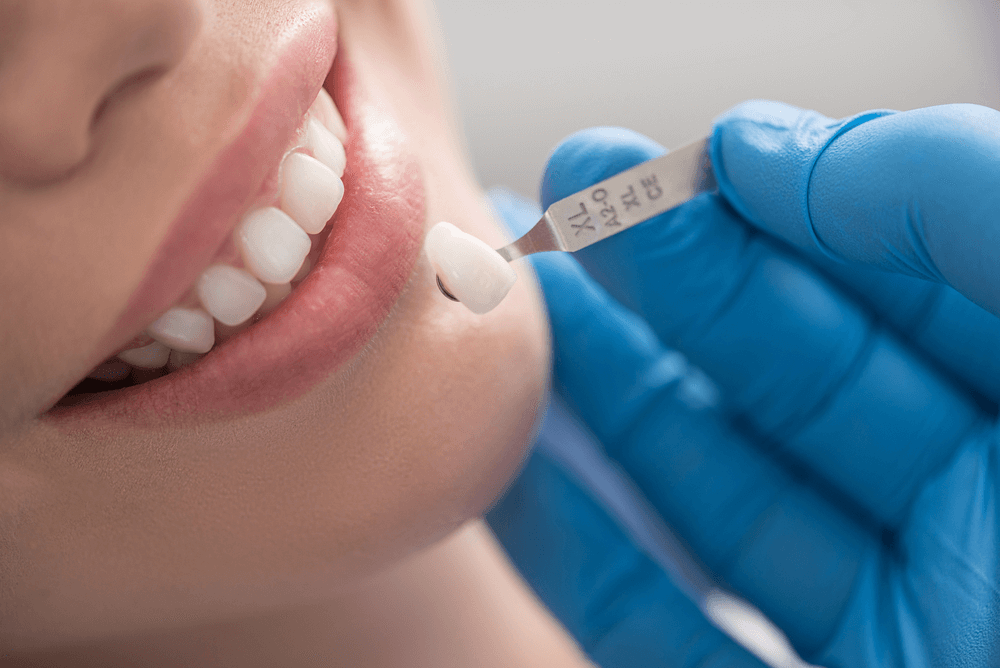Everyone, including young children, should visit the dentist at least once every six months. Permanent teeth are designed to last a lifetime. The risk of tooth decay, gum disease and tooth loss can be reduced with good oral hygiene, a low-sugar diet, use of a mouthguard when playing sport, and regular visits to the dentist or other oral health professional. Modern techniques mean that dental treatment can be carried out with no, or very little, discomfort.
Dental check-up
Your dentist will inspect each tooth using small instruments inserted into your mouth, such as a mirror and probe (a fine, pick-like tool). The dentist looks for issues such as tooth decay, gum disease and other conditions.
If a suspected dental problem is difficult to see (for example, possible decay between two touching teeth), the dentist may need to take x-rays. If a problem exists, your dentist will explain the treatment options and give you an estimate of the cost and likely waiting time.
Dental treatment – scaling and cleaning
Scaling and cleaning involves the removal of built-up debris from the teeth. This may include food particles, soft plaque or hard calculus (caused by the continual accumulation of minerals from saliva and plaque, sometimes called tartar). The dentist or hygienist then cleans and polishes your teeth using a rotating brush with a polishing paste. This helps treat and prevent gum disease.
You will be given instructions on how to keep up your oral hygiene between appointments, as this is important to help maintain healthy gums.
Dental fissure sealants
Sealants protect teeth from decay. Any tooth that has deep grooves or fissures can be treated, but the most commonly treated teeth are the molars and premolars.
A sealant is a liquid solution that is painted on to the biting surface of a cleaned tooth, and which sets as a durable plastic material. It forms a physical barrier that stops food and other bacteria from collecting in the fissures of the tooth. Fissure sealants are commonly recommended for children, as they reduce the risk of decay in permanent teeth.
Dental fillings
Tooth decay that has caused a cavity (hole) is treated with dental fillings. The dentist uses a drill and other tools to remove the decay. The cavity is cleaned, dried and sealed with a filling material.
A variety of materials are available for filling the cavity. You will be given advice on the most suitable material, based on the size, shape and location of the required filling. A common choice is tooth-coloured filling material, which can restore the aesthetic appearance of the tooth, as well as its shape and function.
Dental treatment for restoring damaged teeth
Your dentist can suggest various treatments to restore damaged teeth. These treatments help restore the appearance, shape and function of your teeth. They include:
- bonding – chipped, gapped, discoloured or oddly shaped teeth can be treated with bonding. A tooth-coloured resin filling is applied to achieve a more regular look to the affected tooth. This resin may need to be replaced occasionally
- veneers – teeth can be fitted with porcelain or resin veneers. A veneer is usually 0.5 mm thick and is permanently glued to the front of the tooth
- crowns – these are caps that are permanently cemented or bonded to a tooth. Crowns are made of porcelain and can be matched to the colour of the existing tooth.
Root canal dental treatment
Root canal treatment is a procedure that replaces a tooth’s damaged or infected pulp with a filling. The ‘pulp’is a sensitive tissue that provides oxygen, nutrients and feeling to the tooth. It is housed in the hollow centre of a tooth (pulp chamber), along with blood vessels and nerves. Once a tooth is fully formed, nutrition for the tooth comes from the tissues surrounding the root, and the tooth can function without its pulp.
During root canal treatment, the pulp is removed from a tooth. The dentist cleans and shapes the root canals with a drill and small files. The tooth’s interior is cleaned, dried and packed with a filling material that goes all the way down to the end of the root.
An artificial biting surface is created for the tooth out of dental amalgam, composite material or a crown. This also protects the tooth from fracture, which can occur after root canal treatment. A root canal may need to be performed over a number of appointments.
Dental treatment – tooth removal (extraction)
Modern dentistry and oral health practitioners aim to preserve natural teeth. However, extensively damaged or badly decayed teeth may need to be removed (extracted). The dentist may also recommend extraction to deal with wisdom teeth that are causing problems.
Wisdom teeth can contribute to various dental problems, including overcrowding of the existing teeth, and impaction (the wisdom tooth grows at an angle and butts into the next-door molar or the gum). You may have a local anaesthetic before having a tooth removed (only the local area is numbed). Sedation or general anaesthesia (where you are unconscious) may also be offered depending on the difficulty of the procedure.
Dental treatment – fitting of dentures
Dentures (also known as ‘false teeth’) are artificial teeth that replace some or all of your natural teeth and that you can remove at will. An ‘immediate’ denture can be made while you still have some of your teeth. It is fitted on the day your teeth are removed. However, changes to the jawbone during the healing process may cause the denture to gradually loosen. Within a few months, the immediate denture may need relining of its inner aspect to improve the fit.
Alternatively, a denture can be made a few months after teeth are removed. This allows time for the jawbone to heal and means that the denture should have a better fit.
Dental treatment – fitting of mouthguards
Mouthguards are protective devices that cover the teeth and gums to prevent injury to the teeth, gums, lips, tongue and jaws. They are frequently used while playing sport to prevent damage from accidental or deliberate knocks to the face. A dentist or oral health professional can take impressions of your teeth and make a well-fitting, comfortable mouthguard for your protection.
Dental implants
A dental implant can be used to replace missing teeth. An implant is an artificial tooth that consists of a small titanium screw that is fixed into the jaw and an artificial tooth that is fitted on top of that. Several dental appointments are required for the measuring, design and fitting of the implant.
In time, the implant becomes fused with the bone of the jaw. Implants have a high long-term success rate. However, this is a specialised field of dentistry, so your dentist or oral health professional may need to refer you to another dental health practitioner.
Orthodontic treatment
Orthodontic treatment is often recommended to correct abnormalities in jaw and tooth position, such as crowding, an overbite or protruding (‘buck’) teeth. Your dentist can diagnose and treat these problems or, more usually, may refer you to an orthodontist for treatment. Corrective treatment may include braces or a removable device, and subsequently a retainer appliance to maintain correct tooth positions.






